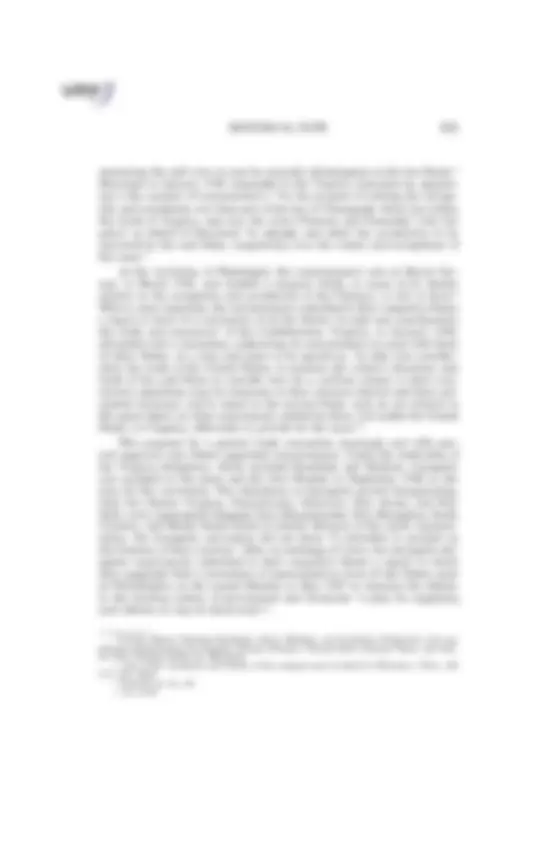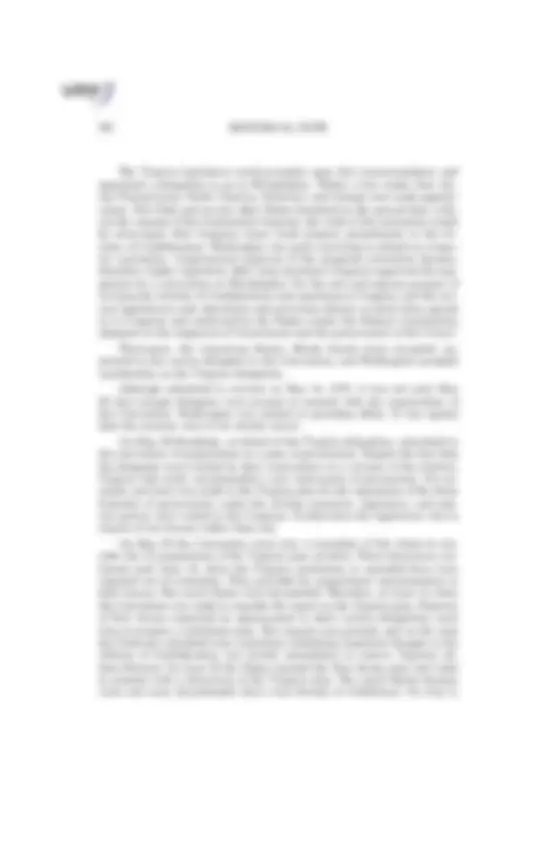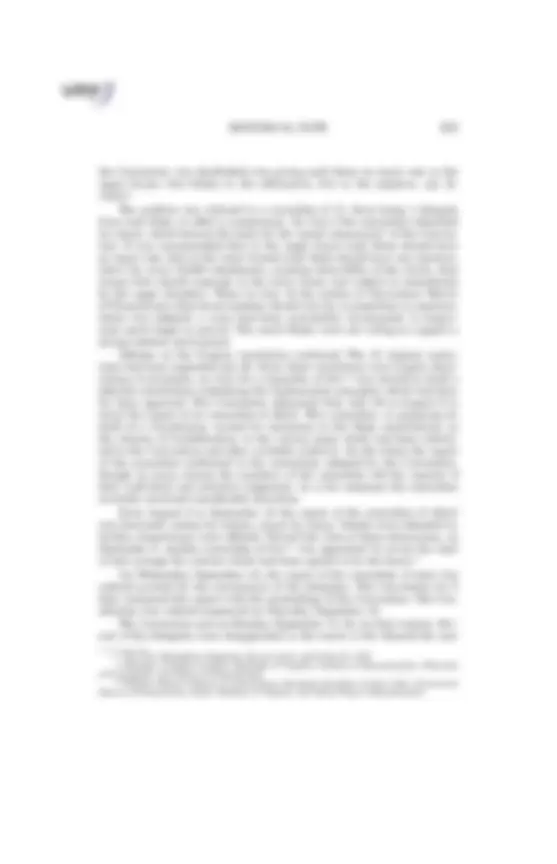






Study with the several resources on Docsity

Earn points by helping other students or get them with a premium plan


Prepare for your exams
Study with the several resources on Docsity

Earn points to download
Earn points by helping other students or get them with a premium plan
Community
Ask the community for help and clear up your study doubts
Discover the best universities in your country according to Docsity users
Free resources
Download our free guides on studying techniques, anxiety management strategies, and thesis advice from Docsity tutors
An account of the historical events leading to the formation of the United States Constitution. It details the calls for intercolonial meetings, the establishment of the Continental Congress, and the Annapolis Convention. The text also discusses the issues with the Articles of Confederation and the subsequent push for a constitutional convention.
Typology: Lecture notes
1 / 8

This page cannot be seen from the preview
Don't miss anything!





In June 1774, the Virginia and Massachusetts assemblies independently proposed an intercolonial meeting of delegates from the several colonies to restore union and harmony between Great Britain and her American Colo- nies. Pursuant to these calls there met in Philadelphia in September of that year the first Continental Congress, composed of delegates from 12 colonies. On October 14, 1774, the assembly adopted what has become to be known as the Declaration and Resolves of the First Continental Congress. In that instrument, addressed to his Majesty and to the people of Great Britain, there was embodied a statement of rights and principles, many of which were later to be incorporated in the Declaration of Independence and the Federal Con- stitution.^1
This Congress adjourned in October with a recommendation that an- other Congress be held in Philadelphia the following May. Before its succes- sor met, the battle of Lexington had been fought. In Massachusetts the colo- nists had organized their own government in defiance of the royal governor and the Crown. Hence, by general necessity and by common consent, the sec- ond Continental Congress assumed control of the “Twelve United Colonies”, soon to become the “Thirteen United Colonies” by the cooperation of Geor- gia. It became a de facto government; it called upon the other colonies to assist in the defense of Massachusetts; it issued bills of credit; it took steps to organize a military force, and appointed George Washington commander in chief of the Army.
While the declaration of the causes and necessities of taking up arms of July 6, 1775,^2 expressed a “wish” to see the union between Great Britain and the colonies “restored”, sentiment for independence was growing. Fi- nally, on May 15, 1776, Virginia instructed her delegates to the Continental Congress to have that body “declare the united colonies free and indepen-
(^1) The colonists, for example, claimed the right “to life, liberty, and property”, “the rights, liberties, and immunities of free and natural-born subjects within the realm of England”; the right to participate in legislative councils; “the great and inestimable privilege of being tried by their peers of the vicinage, according to the course of [the common law of England]”; “the immu- nities and privileges granted and confirmed to them by royal charters, or secured by their sev- eral codes of provincial laws”; “a right peaceably to assemble, consider of their grievances, and petition the king.” They further declared that the keeping of a standing army in the colonies in time of peace without the consent of the colony in which the army was kept was “against law”; that it was “indispensably necessary to good government, and rendered essential by the Eng- lish constitution, that the constituent branches of the legislature be independent of each other”; that certain acts of Parliament in contravention of the foregoing principles were “infringement and violations of the rights of the colonists.” Text in C. Tansill (ed.), Documents Illustrative of the Formation of the Union of the American States, H. Doc. No. 358, 69th Congress, 1st sess. (1927), 1. See also H. Commager (ed.), Documents of American History (New York; 8th ed. 1964),
(^2) Text in Tansill, op. cit., 10.
XVII
dent States.” 3 Accordingly on June 7 a resolution was introduced in Con- gress declaring the union with Great Britain dissolved, proposing the forma- tion of foreign alliances, and suggesting the drafting of a plan of confederation to be submitted to the respective colonies.^4 Some delegates argued for confed- eration first and declaration afterwards. This counsel did not prevail. Inde- pendence was declared on July 4, 1776; the preparation of a plan of confed- eration was postponed. It was not until November 17, 1777, that the Congress was able to agree on a form of government which stood some chance of be- ing approved by the separate States. The Articles of Confederation were then submitted to the several States, and on July 9, 1778, were finally approved by a sufficient number to become operative. Weaknesses inherent in the Articles of Confederation became apparent before the Revolution out of which that instrument was born had been con- cluded. Even before the thirteenth State (Maryland) conditionally joined the “firm league of friendship” on March 1, 1781, the need for a revenue amend- ment was widely conceded. Congress under the Articles lacked authority to levy taxes. She could only request the States to contribute their fair share to the common treasury, but the requested amounts were not forthcoming. To remedy this defect, Congress applied to the States for power to lay duties and secure the public debts. Twelve States agreed to such an amendment, but Rhode Island refused her consent, thereby defeating the proposal. Thus was emphasized a second weakness in the Articles of Confedera- tion, namely, the liberum veto which each State possessed whenever amend- ments to that instrument were proposed. Not only did all amendments have to be ratified by each of the 13 States, but all important legislation needed the approval of 9 States. With several delegations often absent, one or two States were able to defeat legislative proposals of major importance. Other imperfections in the Articles of Confederation also proved embar- rassing. Congress could, for example, negotiate treaties with foreign powers, but all treaties had to be ratified by the several States. Even when a treaty was approved, Congress lacked authority to secure obedience to its stipula- tions. Congress could not act directly upon the States or upon individuals. Under such circumstances foreign nations doubted the value of a treaty with the new Republic. Furthermore, Congress had no authority to regulate foreign or inter- state commerce. Legislation in this field, subject to unimportant exceptions, was left to the individual States. Disputes between States with common in- terests in the navigation of certain rivers and bays were inevitable. Discrimi- natory regulations were followed by reprisals. Virginia, recognizing the need for an agreement with Maryland respect- ing the navigation and jurisdiction of the Potomac River, appointed in June 1784, four commissioners to “frame such liberal and equitable regulations
(^3) Id. at 19. (^4) Id. at 21.
The Virginia legislature acted promptly upon this recommendation and appointed a delegation to go to Philadelphia. Within a few weeks New Jer- sey, Pennsylvania, North Carolina, Delaware, and Georgia also made appoint- ments. New York and several other States hesitated on the ground that, with- out the consent of the Continental Congress, the work of the convention would be extra-legal; that Congress alone could propose amendments to the Ar- ticles of Confederation. Washington was quite unwilling to attend an irregu- lar convention. Congressional approval of the proposed convention became, therefore, highly important. After some hesitancy Congress approved the sug- gestion for a convention at Philadelphia “for the sole and express purpose of revising the Articles of Confederation and reporting to Congress and the sev- eral legislatures such alterations and provisions therein as shall when agreed to in Congress and confirmed by the States render the Federal Constitution adequate to the exigencies of Government and the preservation of the Union.”
Thereupon, the remaining States, Rhode Island alone excepted, ap- pointed in due course delegates to the Convention, and Washington accepted membership on the Virginia delegation.
Although scheduled to convene on May 14, 1787, it was not until May 25 that enough delegates were present to proceed with the organization of the Convention. Washington was elected as presiding officer. It was agreed that the sessions were to be strictly secret.
On May 29 Randolph, on behalf of the Virginia delegation, submitted to the convention 15 propositions as a plan of government. Despite the fact that the delegates were limited by their instructions to a revision of the Articles, Virginia had really recommended a new instrument of government. For ex- ample, provision was made in the Virginia plan for the separation of the three branches of government; under the Articles executive, legislative, and judi- cial powers were vested in the Congress. Furthermore the legislature was to consist of two houses rather than one.
On May 30 the Convention went into a committee of the whole to con- sider the 15 propositions of the Virginia plan seriatim. These discussion con- tinued until June 13, when the Virginia resolutions in amended form were reported out of committee. They provided for proportional representation in both houses. The small States were dissatisfied. Therefore, on June 14 when the Convention was ready to consider the report on the Virginia plan, Paterson of New Jersey requested an adjournment to allow certain delegations more time to prepare a substitute plan. The request was granted, and on the next day Paterson submitted nine resolutions embodying important changes in the Articles of Confederation, but strictly amendatory in nature. Vigorous de- bate followed. On June 19 the States rejected the New Jersey plan and voted to proceed with a discussion of the Virginia plan. The small States became more and more discontented; there were threats of withdrawal. On July 2,
the Convention was deadlocked over giving each State an equal vote in the upper house—five States in the affirmative, five in the negative, one di- vided.^9
The problem was referred to a committee of 11, there being 1 delegate from each State, to effect a compromise. On July 5 the committee submitted its report, which became the basis for the “great compromise” of the Conven- tion. It was recommended that in the upper house each State should have an equal vote, that in the lower branch each State should have one represen- tative for every 40,000 inhabitants, counting three-fifths of the slaves, that money bills should originate in the lower house (not subject to amendment by the upper chamber). When on July 12 the motion of Gouverneur Morris of Pennsylvania that direct taxation should also be in proportion to represen- tation was adopted, a crisis had been successfully surmounted. A compro- mise spirit began to prevail. The small States were not willing to support a strong national government. Debates on the Virginia resolutions continued. The 15 original resolu- tions had been expanded into 23. Since these resolutions were largely decla- rations of principles, on July 24 a committee of five 10 was elected to draft a detailed constitution embodying the fundamental principles which had thus far been approved. The Convention adjourned from July 26 to August 6 to await the report of its committee of detail. This committee, in preparing its draft of a Constitution, turned for assistance to the State constitutions, to the Articles of Confederation, to the various plans which had been submit- ted to the Convention and other available material. On the whole the report of the committee conformed to the resolutions adopted by the Convention, though on many clauses the members of the committee left the imprint of their individual and collective judgments. In a few instances the committee avowedly exercised considerable discretion.
From August 6 to September 10 the report of the committee of detail was discussed, section by section, clause by clause. Details were attended to, further compromises were effected. Toward the close of these discussions, on September 8, another committee of five 11 was appointed “to revise the style of and arrange the articles which had been agreed to by the house.”
On Wednesday, September 12, the report of the committee of style was ordered printed for the convenience of the delegates. The Convention for 3 days compared this report with the proceedings of the Convention. The Con- stitution was ordered engrossed on Saturday, September 15. The Convention met on Monday, September 17, for its final session. Sev- eral of the delegates were disappointed in the result. A few deemed the new
(^9) The New Hampshire delegation did not arrive until July 23, 1787. (^10) Rutledge of South Carolina, Randolph of Virginia, Gorham of Massachusetts, Ellsworth of Connecticut, and Wilson of Pennsylvania. (^11) William Samuel Johnson of Connecticut, Alexander Hamilton of New York, Gouverneur Morris of Pennsylvania, James Madison of Virginia, and Rufus King of Massachusetts.
with a membership of 355, endorsed the new Constitution, but recom- mended that a bill of rights be added to protect the States from federal en- croachment on individual liberties. Maryland ratified on April 28, 1788; yeas 63, nays 11. South Carolina ratified on May 23, 1788; yeas 149, nays 73. On June 21, 1788, by a vote of 57 to 46, New Hampshire became the ninth State to ratify, but like Massachusetts she suggested a bill of rights. By the terms of the Constitution nine States were sufficient for its estab- lishment among the States so ratifying. The advocates of the new Constitu- tion realized, however, that the new Government could not succeed without the addition of New York and Virginia, neither of which had ratified. Madi- son, Marshall, and Randolph led the struggle for ratification in Virginia. On June 25, 1788, by a narrow margin of 10 votes in a convention of 168 mem- bers, that State ratified over the objection of such delegates as George Ma- son and Patrick Henry. In New York an attempt to attach conditions to rati- fication almost succeeded. But on July 26, 1788, New York ratified, with a recommendation that a bill of rights be appended. The vote was close—yeas 30, nays 27. Eleven States having thus ratified the Constitution,^14 the Continental Congress—which still functioned at irregular intervals—passed a resolution on September 13, 1788, to put the new Constitution into operation. The first Wednesday of January 1789 was fixed as the day for choosing presidential electors, the first Wednesday of February for the meeting of electors, and the first Wednesday of March (i.e. March 4, 1789) for the opening session of the new Congress. Owing to various delays, Congress was late in assem- bling, and it was not until April 30, 1789, that George Washington was inau- gurated as the first President of the United States.
(^14) North Carolina added her ratification on November 21, 1789; yeas 184, nays 77. Rhode Island did not ratify until May 29, 1790; yeas 34, nays 32.